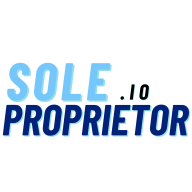How Do You Approach Risk Assessment?
The thrill of embarking on a new business venture never comes without its share of risks—many of which can be daunting. Esteemed Founder and insightful Marketing Consultant share their expert strategies in tackling these challenges head-on. Discussions range from implementing a structured risk assessment procedure to combining qualitative and quantitative methods, totaling seven compelling insights. Get the conversation started with foundational wisdom and wrap up with effective, nuanced advice for comprehensive risk management.
- Structured Approach to Risk Assessment
- Conduct a Micro-Failure Drill
- Prioritize Risks by Impact and Likelihood
- Utilize ISO 31000 Framework
- Leverage Predictive Modeling
- Engage Diverse Stakeholders
- Combine Qualitative and Quantitative Methods
Structured Approach to Risk Assessment
When considering a new business venture, we take a structured approach to risk assessment to ensure informed decisions. This involves a combination of market research, SWOT analysis, and feedback from potential customers.
For example, when we explored launching a new line of eco-friendly home goods, we began with thorough market research to identify trends and competitors. We then conducted a SWOT analysis, listing our strengths, weaknesses, opportunities, and threats. This helped us pinpoint potential risks, such as competition and market saturation.
Additionally, we sought direct feedback from our audience through surveys and social media polls, asking them about their interest in specific products and price points. The results showed that 73% of respondents expressed interest in the new line, indicating a strong market demand.
By combining data from our research, analysis, and customer feedback, we could assess risks effectively. This structured approach not only gave us confidence in moving forward but also guided our marketing strategy and product development. Ultimately, this careful risk assessment helped us launch the new line successfully, aligning with customer preferences and minimizing potential pitfalls.

Conduct a Micro-Failure Drill
When I assess risk for a new venture, I like to do a "micro-failure drill."
Here's how it works: I take the worst-case scenario—the absolute worst thing that could happen if the venture crashes and burns—and then I plan out exactly how I'd recover from that failure, step-by-step.
It's like reverse-engineering a disaster. Once I know how to bounce back from a complete mess, the fear of risk shrinks.
For example, when I started a marketing campaign for a new client, I thought through what would happen if it completely flopped—lost the client, wasted the budget, hurt my reputation.
I mapped out how I'd manage that fallout, from client conversations to replacing the revenue.
Mentally "failing" beforehand made the actual risks feel way more manageable, and that gave me the freedom to take bold actions.

Prioritize Risks by Impact and Likelihood
One approach is to prioritize risks based on their impact and likelihood. This allows focusing on the most critical risks that could have severe consequences if left unchecked. By analyzing both the potential harm and the probability of occurrence, a more balanced view can be achieved.
This helps in allocating resources efficiently to handle the biggest threats. Taking action on this prioritization can make risk management efforts more effective.
Utilize ISO 31000 Framework
Utilizing a structured framework such as ISO 31000 provides a standardized method for risk assessment. This framework offers guidelines and principles that ensure all aspects of risk are considered. It helps create a transparent process that can be communicated easily to stakeholders.
Consistency in risk evaluation makes it easier to compare and manage different risks. Implementing a recognized framework can lead to more reliable risk management.
Leverage Predictive Modeling
Predictive modeling is a powerful tool for assessing future risk scenarios by utilizing data and statistical techniques. This method allows for the anticipation of potential risks before they occur. By leveraging historical data, predictive models can identify trends and patterns that indicate future risks.
It helps in making informed decisions to mitigate those risks in advance. Embracing predictive modeling can enhance foresight in risk management strategies.
Engage Diverse Stakeholders
Involving diverse stakeholders in the risk assessment process provides a more comprehensive view. Each stakeholder can bring unique insights and experiences that may highlight risks not previously considered. Collaboration ensures that all potential risks are discussed and evaluated from multiple angles.
This inclusiveness strengthens the decision-making process and builds a sense of shared responsibility. Engaging stakeholders can lead to more thorough and effective risk assessments.
Combine Qualitative and Quantitative Methods
Using a combination of qualitative and quantitative methods allows for a more rounded risk assessment. Qualitative methods provide rich, contextual insights, while quantitative methods offer measurable and objective data. This dual approach ensures that the assessment considers both the nuanced understanding and the hard facts.
It enables a well-rounded view of the risks involved and how they might be mitigated. Integrating both methods can create a more robust risk management plan.

